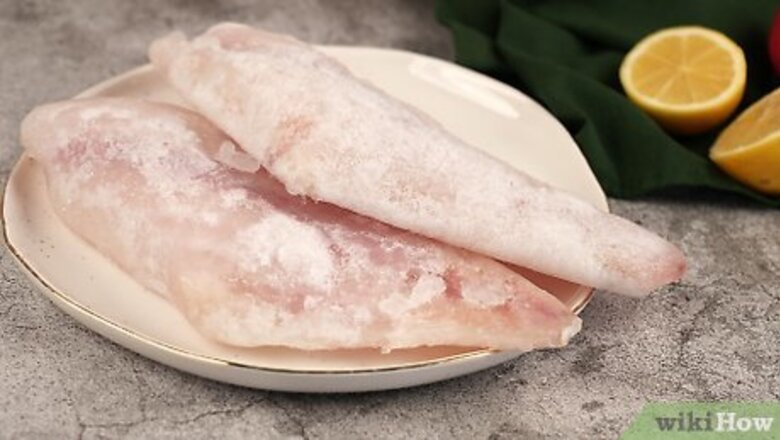
views
- Stick your frozen fish in the refrigerator overnight so it’s completely thawed and ready to cook.
- Defrost your fish quickly in a bowl of cool water, making sure to replace the water every 30 minutes. Never leave your fish out on the counter to defrost.
- Use the defrost setting in your microwave to thaw your frozen fish out slightly.
If You’re Defrosting Overnight:
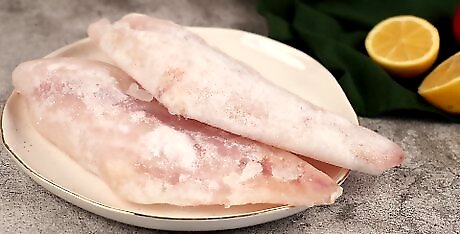
Refrigerate the frozen fish overnight to thaw it gradually. Move the fish to the refrigerator the night before you plan on cooking it—this keeps the fish at a consistently cool temperature while also allowing it to thaw completely. If your fish is vacuum-sealed, remove the packaging and stick the fish on a plate before placing it in the fridge. Vacuum-sealed fish can develop botulism-forming bacteria when left at temperatures above 38 °F (3 °C). Pro tip: Plan to cook your fish a day or 2 in advance before thawing it out in the refrigerator, as frozen seafood needs plenty of time to completely defrost.
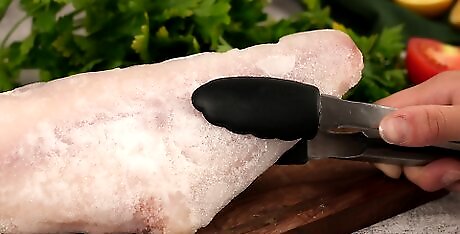
Use the fish within 1-2 days after thawing it out. Fish doesn’t need to be used the same day that it’s thawed, but try to cook it within 2 days of sticking it in your refrigerator. Before you start cooking, give the fish a quick sniff to tell if if it’s gone bad—fresh fish has a mild scent, but it smells more sour and spoiled when it goes bad.

Refreeze the fish within 1-2 days if you don’t plan on using it right away. Dip fatty pieces of fish (like mullet, mackerel, salmon, tuna, and trout) in a mixture of 2 tsp (6 g) of ascorbic acid and 1 US qt (0.95 L) of cold water for around 20 seconds. If you have lean fish (like cod, bass, catfish, flounder, and snapper), dip the meat in a saltwater mixture made with ¼ cup (64 g) of salt and 1 US qt (0.95 L) of cold water for 20 seconds. Then, cover up the pretreated fish in moisture-proof wrap, dividing each piece of fish with freezer paper. Raw fish stays fresh in the freezer for 3-12 months, while cooked fish stays fresh for up to 3 months.
If You’re Defrosting to Cook Later Tonight:
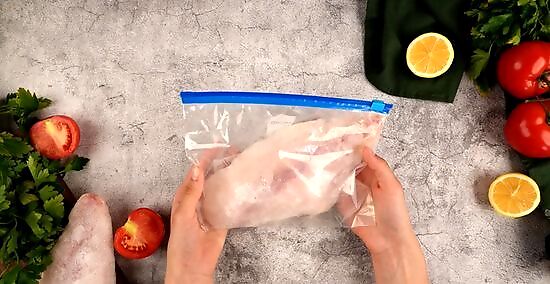
Put the fish in a plastic bag. Make sure that the bag is completely sealed so the fish won’t touch or absorb any of the cool water. If this happens, the fish might turn out more watery after it’s cooked. If your fish is vacuum-sealed, remove the extra packaging before you start thawing anything.
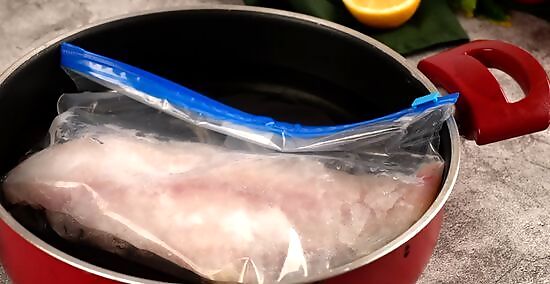
Place the fish in a pot of cold water. Make sure that the water is cooler than 70 °F (21 °C) to prevent any contamination. If the fish floats, put a plate or another weight on top to keep it completely submerged.
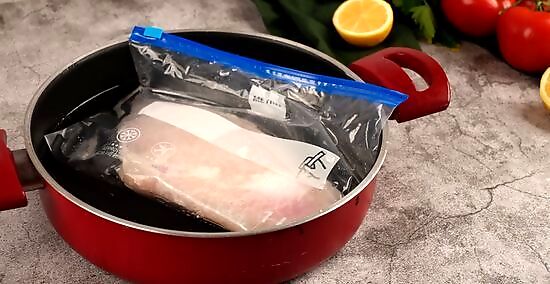
Switch out the water every 30 minutes until the fish is thawed. As the pot of water warms to room temperature, pour it out and refill it with cool water. Ideally, don’t thaw your fish for more than 2 hours; otherwise, harmful bacteria can start to multiply. Once the fish thaws, cook it right away. Warning: Don’t refreeze any raw meat that you’ve thawed out using cool water.
If You’re Defrosting Immediately:

Unwrap and the fish and set it on a plate. Remove the frozen fish from any vacuum seal packaging, plastic bags, or other wrap. Make sure that the plate you place the meat on is microwave-safe.
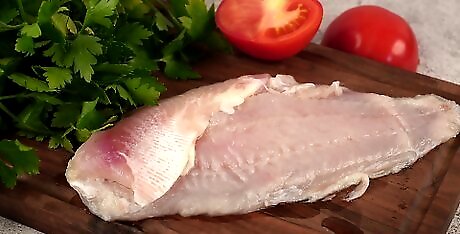
Thaw the fish using your microwave’s defrost setting. Check your microwave’s user manual to find the proper way to defrost frozen items. Heat the fish long enough so the fish is flexible (rather than frozen solid) with ice still visible on the surface. Microwave thawing can work in a pinch, but it isn’t the most ideal way to thaw out your frozen fish since it’ll likely thaw the meat out unevenly. Whenever possible, opt for refrigerator or cool water thawing instead.
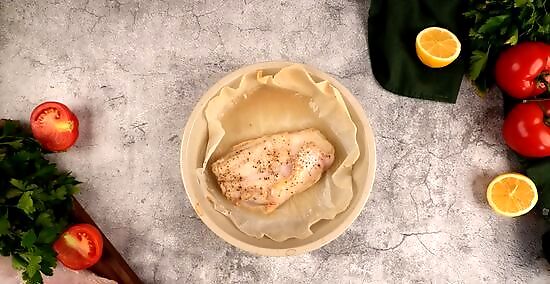
Cook the fish right away. Stick your fish on the stove, in the oven, on the grill, or however else you’d like to cook it—just don’t put it in the fridge or leave it out on the countertop. If you plan on refreezing any of your fish, make sure that it’s completely cooked first.

















Comments
0 comment